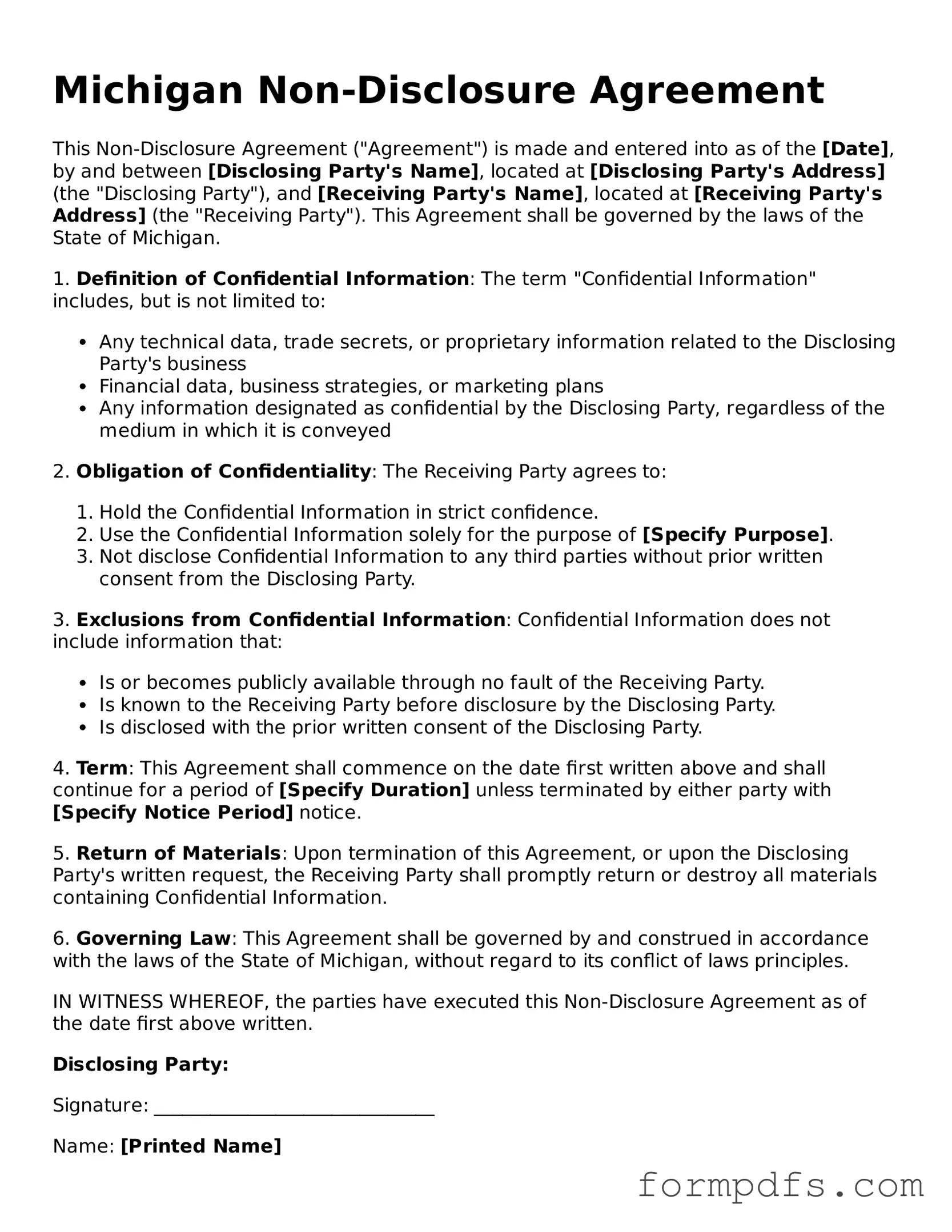What is a Michigan Non-disclosure Agreement (NDA)?
A Michigan Non-disclosure Agreement is a legal contract designed to protect sensitive information shared between parties. It ensures that the recipient of confidential information cannot disclose it to third parties without permission. This agreement is commonly used in business settings to safeguard trade secrets, proprietary information, and other confidential data during negotiations or collaborations.
Who should use a Non-disclosure Agreement?
Any individual or business that intends to share confidential information with another party should consider using an NDA. This includes entrepreneurs discussing business ideas, companies sharing trade secrets with partners, or employees having access to sensitive company data. An NDA helps to establish trust and sets clear expectations regarding the handling of confidential information.
What information can be protected under an NDA?
An NDA can protect a wide range of confidential information. This includes, but is not limited to, business plans, financial data, customer lists, marketing strategies, and technical specifications. The agreement should clearly define what constitutes confidential information to ensure all parties understand their obligations.
How long does the confidentiality obligation last?
The duration of confidentiality obligations can vary. Typically, NDAs specify a time frame, which can range from a few years to indefinitely. The length often depends on the nature of the information being protected. For example, trade secrets may require longer protection, while other types of information might only need to be kept confidential for a limited time.
What are the consequences of breaching an NDA?
If a party breaches an NDA, they may face several consequences. The injured party can seek legal remedies, including monetary damages and injunctive relief to prevent further disclosures. Breaching an NDA can also damage professional relationships and reputations, making it crucial to adhere to the terms outlined in the agreement.
Can an NDA be modified after it is signed?
Yes, an NDA can be modified after it is signed, but both parties must agree to the changes. Modifications should be documented in writing and signed by all parties involved to ensure clarity and enforceability. It's important to revisit the agreement periodically to ensure it still meets the needs of both parties.
